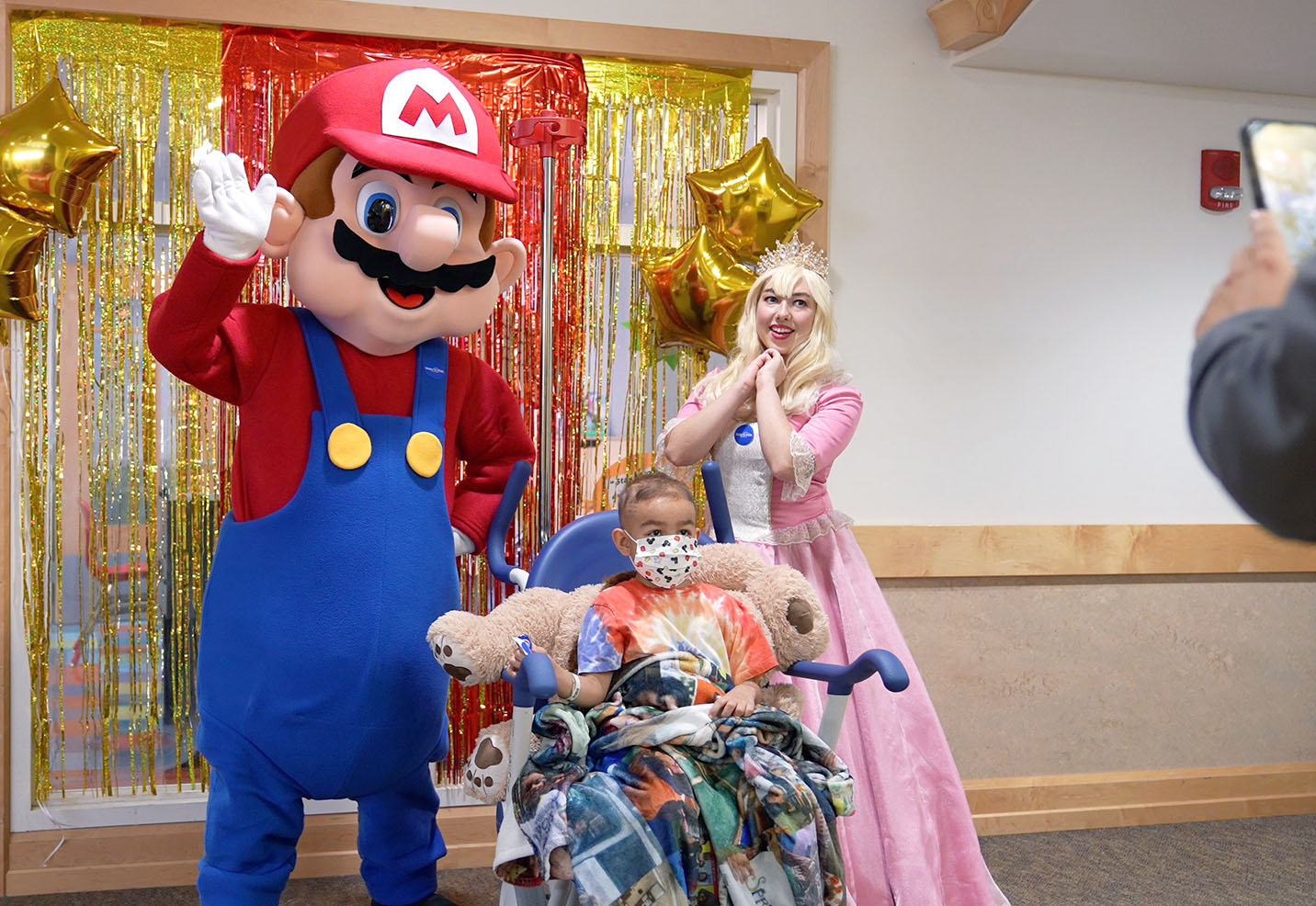With four pediatric neurosurgeons on staff, WMCHealth’s Maria Fareri Children’s Hospital has one of the largest pediatric neurosurgery groups in New York.
We are also recognized by the National Association of Epilepsy Centers as a Level 4 Center. This means we provide more complex forms of treatment, including minimally invasive surgery to halt epileptic seizures.

Why Choose Maria Fareri Children's Hospital?
Aggressive treatment doesn’t have to be invasive and painful. Many of our advanced techniques are minimally invasive. As a result, many of our young patients, even the tiniest newborns, can recover faster from treatment. They experience less pain and scarring and have quicker recoveries.
When your child needs surgery, the last thing you want is to be in a strange place far from family and friends. Maria Fareri Children’s Hospital is not only close to home, it feels like home. When you choose us, you are choosing a strong support system.
Neurologic Conditions We Treat with Surgery
Thanks to new advancements in pediatric neurosurgery, we can now successfully treat conditions that once felt impossible to improve. The conditions we treat include:
- Epilepsy: We are part of the Pediatric Epilepsy Research Consortium (PERC). We can treat epileptic seizures with a variety of minimally invasive surgical procedures to improve patients’ quality of life.
- Cancers and tumors: Neurosurgeons at Maria Fareri Children’s Hospital have extensive experience with lifesaving treatment for childhood cancers and central nervous system tumors.
- Plagiocephaly and torticollis: Our craniofacial surgical team often treats children with skull conditions resulting from head positioning or skull fusion.
- Hydrocephalus: Our cerebrospinal fluid (CSF) specialists have found effective, minimally invasive treatments for hydrocephalus and other spinal fluid conditions.
- Chiari malformation type I: Our surgeons use extradural/intradural decompression to remove bone and soft tissue to release pressure that can cause clumsiness, weakness, or difficulty walking.
- Brachial plexus injury: Peripheral nerve surgeons can restore arm movement after birth-related injuries, such as Erb’s palsy.
- Peripheral nerve tumors: We treat schwannomas, neurofibromas, malignant peripheral nerve sheath tumors, and perineuriomas. We also work closely with the neuro-oncology team, which has expertise in patients with neurofibromatosis types 1 and 2.
- Vascular disorders: Among the vascular disorders we treat are arteriovenous malformations, fistulas, aneurysms, and moyamoya.
Innovative Epilepsy Surgery
When medications are not enough, Westchester Medical Center leads the way in advanced epilepsy care. From surgical interventions to cutting-edge neurostimulation therapies, our team offers personalized treatments that restore independence and improve quality of life.
Technology We Use
The landscape of neurosurgery is constantly changing, and the surgeons and researchers at Maria Fareri Children’s Hospital are leading the way. As part of an academic medical center, we have access to the latest in research and innovation. Our teams use advanced technologies and services to help even our tiniest pediatric patients, including:
Stereotactic EEG
Small wires called electrodes may be inserted into the brain using a computerized robot to help find the starting point of seizure activity. Once located, it can be removed with surgery.
Responsive Neurostimulator (RNS) or Vagal Nerve Stimulator (VNS)
For children with medication-resistant epilepsy, a device can be placed inside the skull that activates an electric pulse to stop a seizure.
Stereotaxy
This surgical technique uses a computer that produces complex 3D images, allowing for more precision and less risk when accessing the area of focus.
Tubular Retractors
This cylinder is used to gently push the surrounding brain away to access a tumor and help protect the surrounding tissue.
Endonasal Transsphenoidal Endoscopic Approach
When a tumor is located deep in the brain, this procedure can be used to access it with less risk. Surgeons use a very small camera through the nose to reach the tumor.
Nerve Transfers
In these procedures, working nerves above the spinal injury can be rewired to restore movement in muscles that were not functioning.
Cerebral Angiogram
We are at the forefront of this less invasive technique in which a tiny catheter is threaded through the groin or wrist into the brain. This allows us to see the blood vessels in the brain and determine a path forward.
